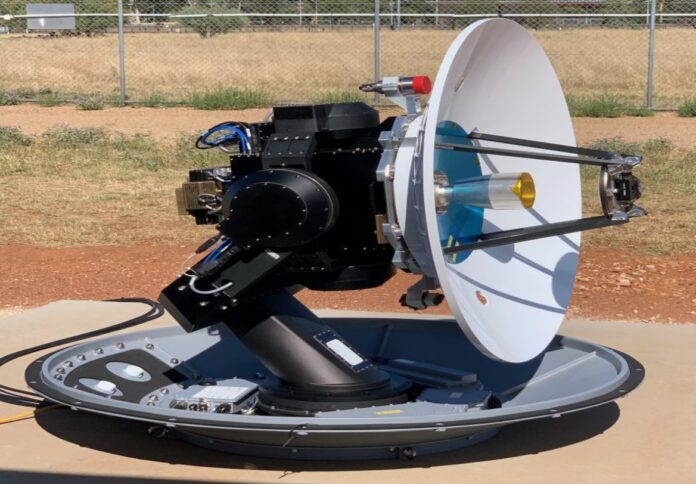
SmartSat Cooperative Research Centre (CRC), Australia’s space research centre, has unveiled the Compact Hybrid Optical-RF User Segment (CHORUS) prototype terminal to create more stable and secured military satellite communications at the 15th Australian Space Forum.
Funded by SmartSat CRC, the technology embedded in the prototype has been entirely developed in Australia by the Defence Science and Technology Group (DSTG), and industry and academic partners, following three years of research.
EOS Space Systems and EM Solutions, Lyrebird Antenna Research, Shoal Group, Australian National University and the University of South Australia are among the centre’s partners.
The centre pointed out that with CHORUS, multiple shortcomings in satellite-based optical communications technology will be addressed, and viable commercialisation routes for new SATCOM capabilities will be made available.
The new prototype terminal is a hybrid optical/RF device that combines an optical telescope and an RF antenna into a unit known as the AntennaScope.
When optical communication is possible, SmartSat CRC said this guarantees users always have dependable communications and substantially better data rates.
Professor Andy Koronios, CEO of SmartSat CRC, described CHORUS as a game-changing technology that will transform Australia’s military communications.
“By combining RF communications with the more secure optical communication technology, CHORUS has enabled the development of an entirely new class of satellite communications terminal,” the professor said.
The professor went on to say that existing military systems may be modified with this new technology, reducing expenditures on replacing terminals on military vehicles and ships.
He also said that CHORUS has the potential to establish Australia as a leader in the development and delivery of an entirely new type of military satellite communications service for the Australian Defence Force and its allies.
“This includes developing optical communications to provide higher bandwidth, lower observability, and more secure communications than current RF-only technologies for tactical communications between maritime, aircraft, and land vehicles,” the professor noted.
He added, “We believe this technology has additional commercial applications, such as commercial shipping and cruise liners.
The professor emphasised CHORUS is a testament that Australia can achieve world-first outcomes in advanced research, development, and manufacturing.




















